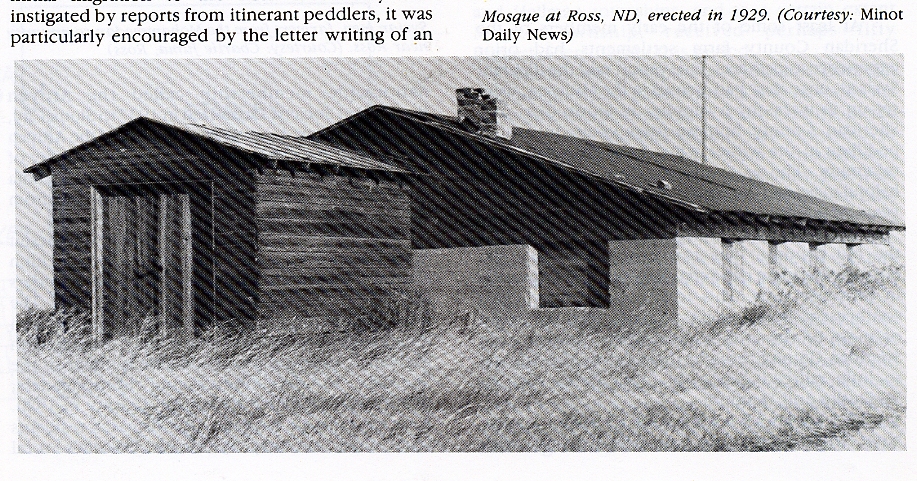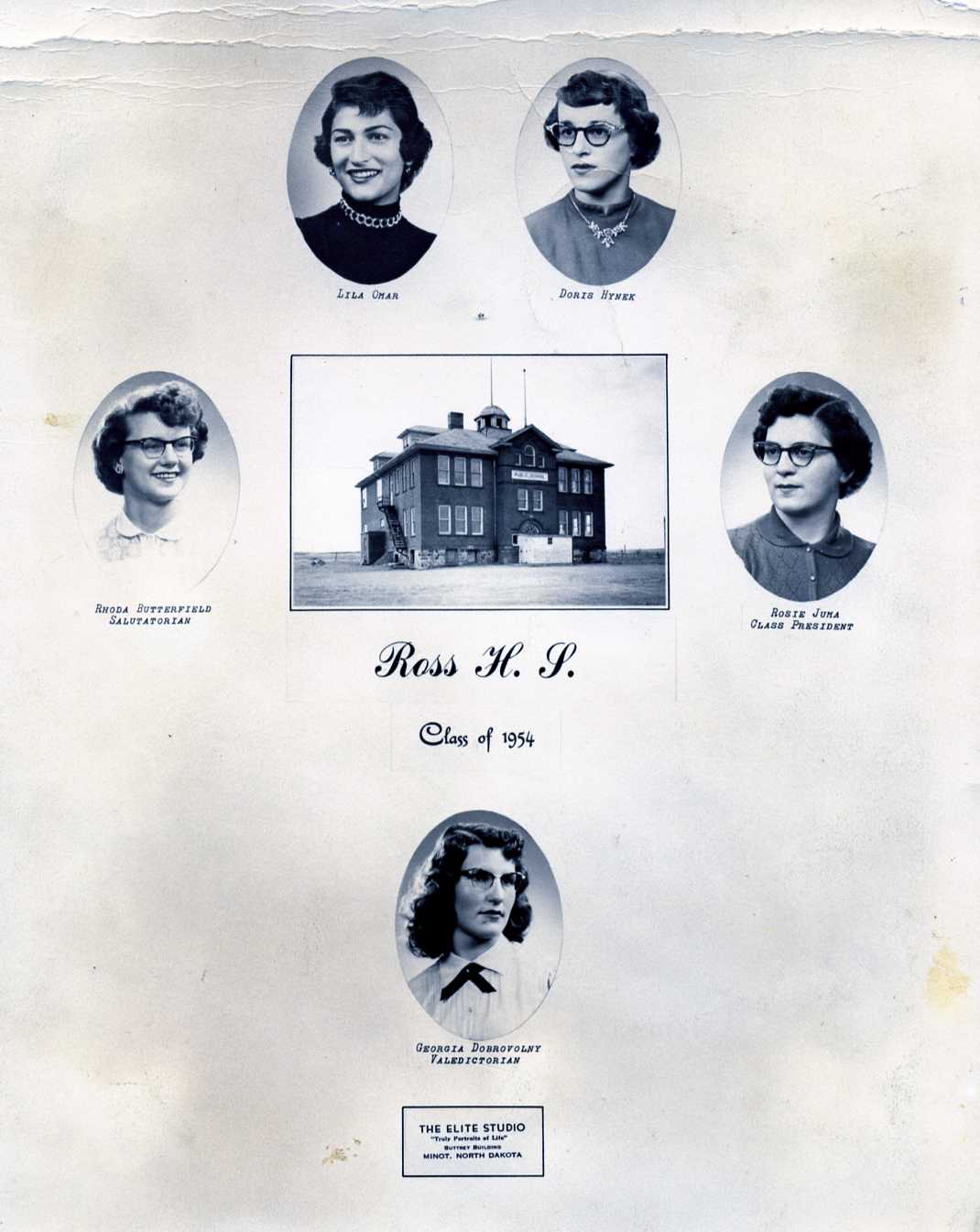#238 – Dick Bernard: A close encounter with a Mosque
Related post Nov. 14, 2010 here.
The abundant insanity (that’s what it is – insanity) around the proposed (and approved) Islamic Center in lower Manhattan caused me to revisit a significant time in my youth.
In the summer of 1953 I was about to enter 8th grade. We had moved to the tiny village of Ross, North Dakota, hardly even a wide spot in the road between Minot and Williston; on the main line of the extremely busy Great Northern Railroad.
This was the first oil boom in the Williston Basin and housing was at a premium. I was the oldest of five kids, and the only housing for our parents was next door to the school in which they both taught. The “teacherage”, as such buildings were called, had two rooms and a kitchen. As I recall, we showered in the basement of the school building, and that was where the telephone was. Our conditions were primitive.
But 1953-54 was a rich one for me. Among other happenings was meeting a farm kid whose name was Emmett. Emmett and I became friends as kids do, and while I don’t recall that we spent a lot of time together I have kept in contact with him to this day, 57 years later.
One time during that year I was invited out to Emmet’s home in the country. I rode my bike out there, met his parents and his sisters and brother, had supper, saw the barn and the horses, and went home. Driving down that dirt road seemed like a long trip then, but three years ago I revisited the town and the now deserted farm, and it was perhaps two or three miles at most from my home to his.
Emmett was a little darker complected than I with somewhat different facial features than most North Dakota country folks. I might have known then that he and many families around the town were of Syrian ancestry, but it really never registered with me – it wasn’t important.
Similarly, at some point somebody must have told me that these Syrian folks with unusual names were “Mohammedans”, but I don’t remember who, or when, that might have been.
We moved on after a single year in that tiny town and went somewhere else.
It was years later that I came to learn that along that country rode I’d biked sometime in 1953-54 was probably the first Mosque in the United States of America; and later still that someone – probably Emmett – told me that his Mom (both parents and the current Mosque are pictured at the referenced website) was one of the key persons in keeping the Moslem faith alive in outback North Dakota.
Dad was the Superintendent of the tiny school at Ross, and he tended to keep records for posterity. In his papers I came across the attendance records for the Ross school in the year I was there. Typewritten on the roster was the name of my friend, Emmett ____. Handwritten to the left of Emmett’s name was “Mohomed”, more like Emmet’s true given name. Even then, perhaps, there was no desire to raise any unnecessary “red flags”.
I visited the Ross Mosque and the Cemetery in the summer of 2007. I recognized many last names and it was an emotional experience for me.

The first Mosque near Ross ND from Plains Folk, North Dakota\’s Ethnic History , Playford Thorson, ND Institute for Regional Studies 1988, p. 360
Intolerance is one of our many inheritances in this country.
I hope that the powers that be do not cave in to intolerance in New York City or anywhere else.

Ross ND High School Graduates 1954
Update November 13, 2010:
This evening I have been invited to give a very brief presentation concerning this blogpost. The above blogpost itself will be in the groups program booklet.
Following are some brief notes in addition to what is already described above.
In addition to having a one year and very positive encounter with the Muslim community of Ross ND in 1953-54, I also have family experience of having lived in many small towns in North Dakota in my youth. Both my father and mother taught in the schools of these communities. In recent years I have had a great interest in family history so that has also given me more reason to pay attention to things most people might not notice.
In 1991, I inquired about the Ross school, and the then-County Superintendent provided me with my Dad’s year-end report for the high school which that year had 30 pupils in grades 9-12. In 1953-54, the report shows, there were at least six and possibly seven members of the Ross Syrian Community in the public school. Two were seniors, one from Emmett’s family.
We, on the other hand, were clearly religious outsiders: our family was Catholic, and I would doubt there were any other Catholics in the community. We attended church in the nearby trade center of Stanley.
A 1988 book, “North Dakota’s Ethnic History: Plains Folk” (ND Institute of Regional Studies, North Dakota State University, multiple authors), has been a frequent resource for me in my family history work. Pages 354-363 of this book discuss Syrians (Lebanese) and their presence in many parts of North Dakota. On page 360 is this quote, particularly relevant to this discussion: “In Mountrail County, near the village of Ross, other Syrians put down roots during the homestead rush at the turn of the [20th] century. Sam Omar, probably the first settler of Arabic background, in 1902 took land on section 26, Ross township. Later in that year, twenty-two other men came to Ross Township and nearby Alger Township. Within several years almost seventy Lebanese men had taken up land in Ross, James Hill, and Alger townships.
The Mountrail settlers were unique in that, with two exceptions, everyone was of Muslim background. Their descendants today remember two home towns “in Syria”: Bire (Berrie) and Rafid. These villages, in eastern Lebanon adjoin each other and lie only three miles from Ain-Arab. Beirut is twenty-eight air miles to the northwest.
Families in the early days came not only from Lebanon and eastern American seaports, but also from settlements in Nebraska as well….”
I saw these families through an eighth graders eyes in the single year of 1953-54.
I don’t recall so much as a thought or a mention that they were ‘different’. They were simply part of the community.
Lest I be accused of seeing the world through rose-colored glasses, North Dakota was no less immune to prejudice than anywhere else. In my own Catholic case, for instance, in the late 1920s there was a Ku Klux Klan movement that was anti-Catholic in its focus, led by a Protestant minister, and was very damaging. In the late 1940s an anti-garb law was passed prohibiting Nuns in habits to teach in public schools. And, of course, there was the shameful matter of treatment of American Indians.
With the coming of the mid-1950s came two major Air Force bases, at Minot and Grand Forks, and large numbers of African-Americans. I am sure this was an occasional matter of concern.
But in my interlude in Ross, meeting a Muslim kid named Emmett, and experiencing the hospitality of Emmett’s farm family, I developed lifelong affection for these fine rural folks in northwestern North Dakota, and an appreciation for the religious tradition which they held.
